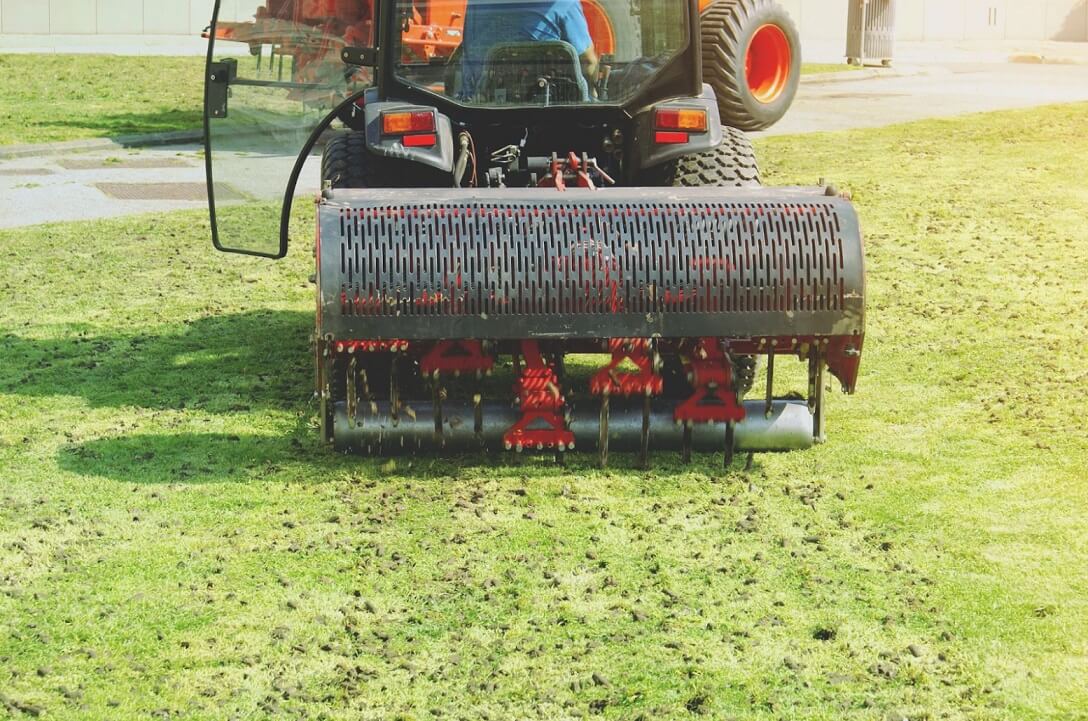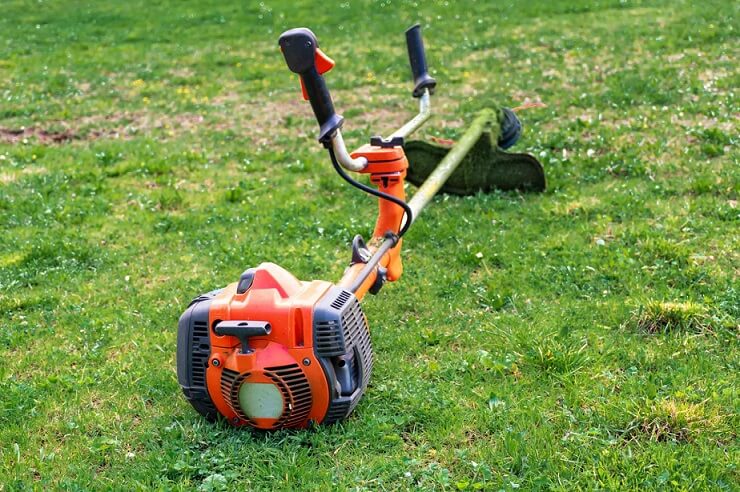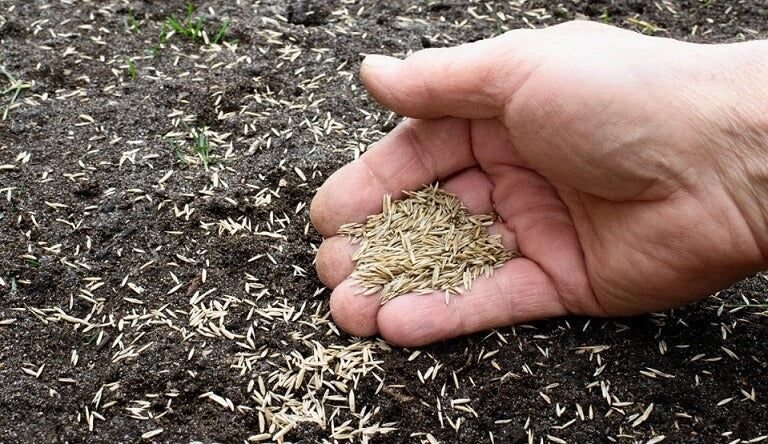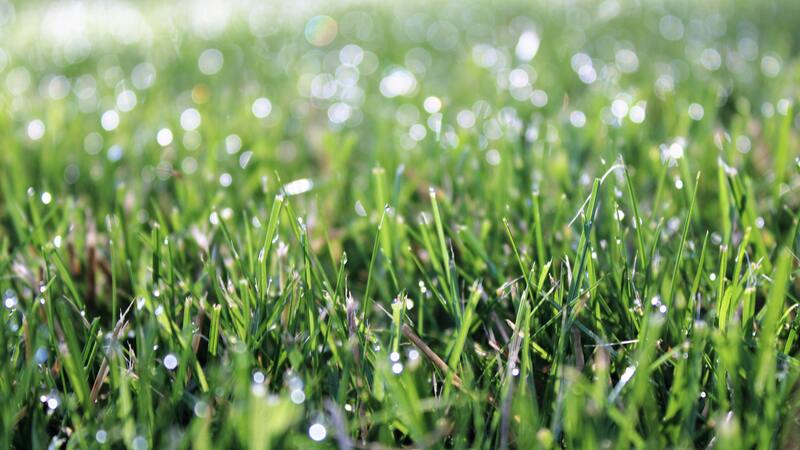Spring is the season of fresh starts, and that includes your lawn. If you're looking to bring your grass back to life after winter, a few smart steps can make a big difference. Today we’ll walk you through the essential spring lawn care tips to help your yard grow greener and healthier. Plus, we’ll show you how to take your lawn care routine to the next level.

7 Spring Lawn Care Tips
Springtime grass care is a make-or-break time for how your backyard will look all year long. Unlike other seasons, spring requires a little extra love and attention. Here are a few things to keep an eye on as you get ready for the growing season.
Rake to Prepare Your Lawn for New Growth
In spring, new grass can struggle to grow through matted patches of thatch—the layer of dead turfgrass left over from the previous year. Raking helps break up this layer and allows fresh growth to come through.
So, when should you do it? It’s best to remove thatch deeper than 1/2 inch once your lawn begins to green up, which indicates the grass is actively growing and well-rooted. Be gentle during this process, as the grass is still delicate in early spring.

Cut New Lawn Edges
Crisp, clean lawn edges can instantly make your yard look more polished. After winter, the borders around flower beds, walkways, and driveways often get messy or overgrown. Use a half-moon edger or a spade to reshape the edges and give your lawn a fresh, defined outline. This small detail makes a big visual impact and helps keep grass from creeping into places it shouldn’t. It’s a simple step that can really elevate the overall look of your outdoor space.
Related reading:
10 Lawn Edging Ideas for Beautiful Lawns
Fix Bare Patches
Though fall is the preferred time to fix a lawn with bare patches, you can also address them in spring to keep weeds from taking over. Start by seeding the bare areas and apply a slow-release nitrogen fertilizer, water newly seeded areas every day for at least a week, or until the grass reaches mowable height. Once the new grass is 2 inches high, mow over it, and mow around the bare patches.
Prepare Early Spring Grass Fertilizer
After a long winter of ‘dieting,’ your lawn is practically screaming for nutrients come spring. Fertilizing is a big deal during this time, but you’ve got to get the timing and amount just right. If you fertilize too early, your lawn might not be ready to soak it up. Wait too long, and you risk missing the prime growth window.
The sweet spot is early spring—think when the soil hits around 55°F (about 13°C). Go for a slow-release fertilizer packed with nitrogen, phosphorus, and potassium to keep your lawn thriving all season. And hey, if you’re regularly mowing, those clippings can act as natural fertilizer, making your lawn care a lot more eco-friendly.
Weeding Matters
Spring is when your lawn starts to thrive again, but unfortunately, so do the weeds. Dandelions, crabgrass, and other uninvited guests tend to pop up just as your grass is waking up. So what to do? Catch them early and take action before they spread. Besides, regular mowing also helps keep weeds under control by preventing them from going to seed and taking over your lawn.
Mowing Frequency and One-third Rule
Spring is the golden season for grass growth, so your mowing routine really matters. Did you know that grass grows twice as fast in spring compared to fall? That means your mower is going to be getting more action than usual, and you'll need to spend extra time keeping up with it. Mowing height is super important too.
Cut it too short, and you’ll risk weakening the grass, making it vulnerable to pests and disease. Trim it too high, and you might throw off the look and airflow of your lawn. Usually, a good rule of thumb is to mow about one-third of the grass height to keep things healthy and looking sharp.
Get the Right Mower
Having the right lawn mower makes all the difference, especially in spring when your lawn grows fast. If your mower isn't cutting it—literally—it might be time for an upgrade. Think about the size of your yard, your mowing habits, and how much effort you’re willing to put in.
For small lawns, a basic push mower might do the job. But if you want to save time and skip the manual labor, a robotic lawn mower is a game-changer. With features like app control and smart navigation, it takes care of the work while you focus on enjoying your lawn, not managing it.
If you had to choose between mowing the lawn on the weekend or binge-watching TikTok or Netflix, I bet you’d instinctively lean toward the latter. So how can you enjoy your time and still keep the lawn looking great?
Why Robotic Lawn Mowers Are the Perfect Solution for Spring Lawn Care
Take Navimow i105 Robotic Lawn Mower, for example. Let’s explore how its advanced technologies intelligently address the challenges of spring mowing.

Smart Mapping for Precise Coverage
Most robotic mowers today use a combination of sensors and smart algorithms to map out your lawn in detail. During the first run, the mower scans the area and creates a virtual layout, identifying edges, trees, flower beds, slopes, and any permanent obstacles.
Unlike traditional mowers that move randomly and often miss spots, these robots plan their routes intelligently. They work methodically, like a seasoned gardener who knows the yard by heart, adjusting their paths to cover every inch efficiently, even if your lawn has complex terrain.
Obstacle Avoidance with Sensor Technology
Spring lawns are full of life, and not just plants. Toys, garden tools, pet bowls, or even unexpected visitors like a hedgehog can pop up without warning. That's why obstacle detection is so important.
With built-in sensors, RTK technology, and in some cases even cameras, robotic mowers can detect and steer clear of temporary objects in real time. Think of it as lawn care with the awareness of a self-driving car, smoothly navigating around anything in its way without missing a beat.
Remote Monitoring and Control via App
Spring often means spending more time outside, but that doesn't mean mowing should take up your weekend. With app-based control, you can manage your mower from anywhere, whether you're at work or even away for a few days.
Simply prepare your spring lawn care checklist, schedule a mow, check its progress, or pause it with just a few taps on your phone. It's like having lawn care in your pocket, freeing up your time without compromising results.

Seamless Integration with Smart Home Systems
Many models, including the Navimow i105, sync easily with smart home ecosystems, allowing for voice control and automation. Imagine telling your digital assistant to mow the lawn while you're getting ready for a barbecue. It's one more way tech is making outdoor chores less of a task and more of a background process.
Conclusion
Spring lawn care lays the foundation for a healthy, vibrant yard that lasts all year. From raking away old thatch and trimming clean edges to repairing bare patches and applying fertilizer at the right time, every step helps your lawn thrive. With the right tools—especially a dependable mower—these tasks become easier and more efficient. Whether you prefer hands-on work or smart technology to lighten the load, spring is the ideal season to give your lawn the attention it deserves.
FAQ
What is the best lawn treatment for spring?
The best spring lawn treatment includes a mix of raking to remove thatch, applying a slow-release fertilizer, seeding bare patches, and starting a consistent mowing routine. This combination helps promote healthy growth and keeps weeds in check early on.
What to put on the lawn in spring?
In early spring, a pre-emergent herbicide can help stop weeds like crabgrass before they sprout. Just make sure to follow the label instructions and avoid over-spraying.
When to apply weed and feed in spring?
The best time to apply weed and feed is when your lawn is actively growing but weeds haven’t fully taken over—usually in early to mid-spring. Aim for a time when daytime temperatures are consistently above 55°F (13°C), and the grass is green and growing. Avoid applying too early, as the product won't be as effective if the weeds aren’t actively sprouting.
More Blog
Should You Aerate Your Lawn in Spring
Planning to aerate your lawn this season, but unsure because of the mixed views on spring aeration? Many homeowners face the same confusion. Some say spring works fine, while others warn against it, which makes the decision harder than it...
Should I Cut Grass Short for Winter: The Expert Tips 2025
As winter approaches, many homeowners begin to wonder about the best practices for maintaining their lawns. One common question that arises is whether to cut the grass short before the cold weather sets in. Well, the answer may vary due...
How Long to Water New Grass Seed
Planted or planning to plant new seeds? You might have heard that new grass needs more care and water than an established lawn. The most common confusion is how long to water it so it grows well. Your concern makes...
When to Stop Mowing Your Lawn Before Winter?
As the weather gets colder, it’s time to prepare for the long winter season. While you’re preparing a good stock of food and remedies and weather-proofing your pets, don’t forget to adjust your lawn care routine, including when to stop...
How Often to Water Grass Seed?
You spread grass seed evenly and waited for a lush green lawn, but witnessed patchy sprouts. This usually happens not because the seed was poor, but because the soil surface dried out at the wrong time. If a seed once...
Can You Cut Wet Grass? Is it Safe?
Beginners and new lawn owners often ask if they can cut wet grass. It’s something that confuses many people, and yet, they are unable to decide. But not after reading this article. We will help you understand the issues of...






Share: